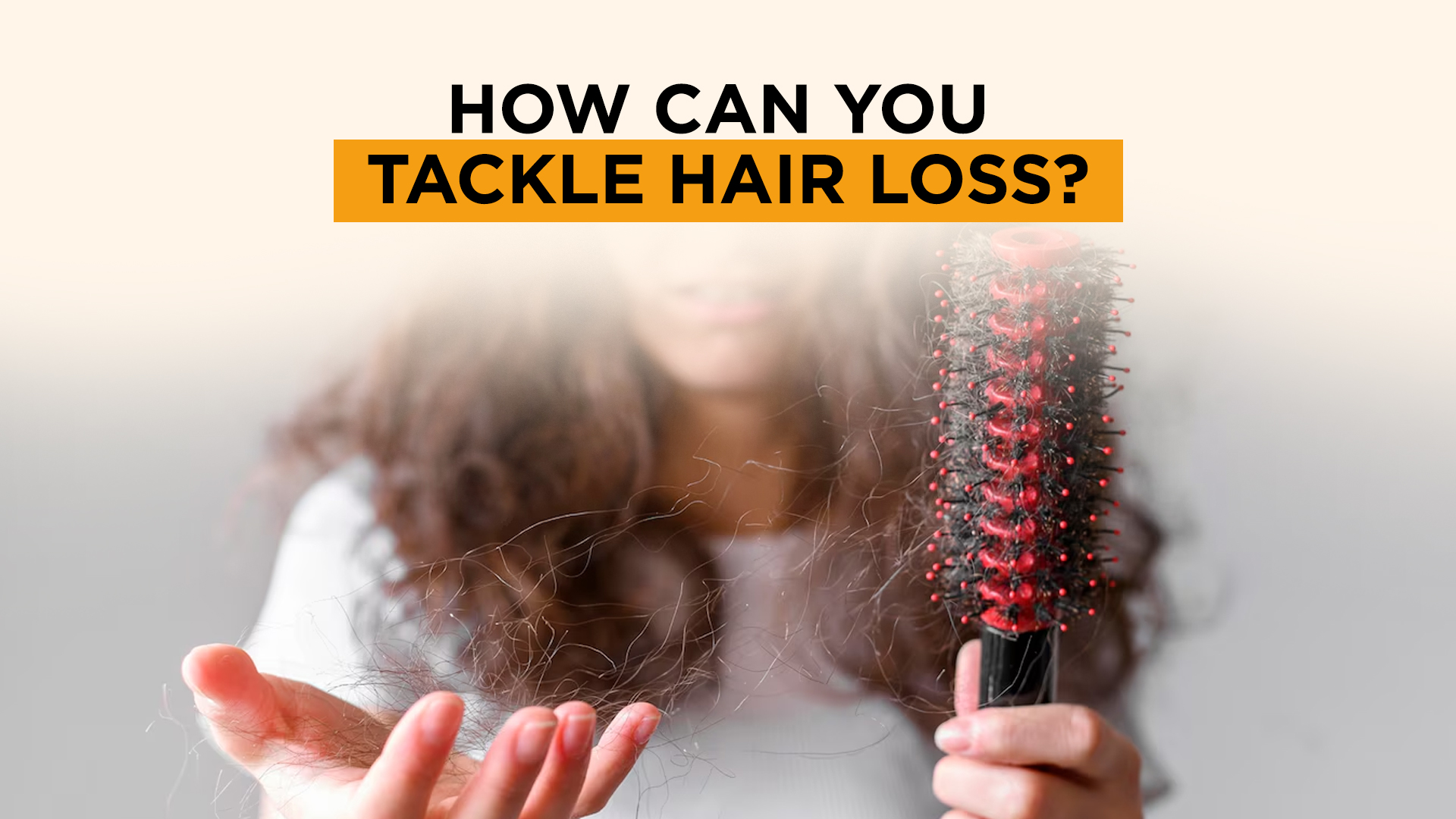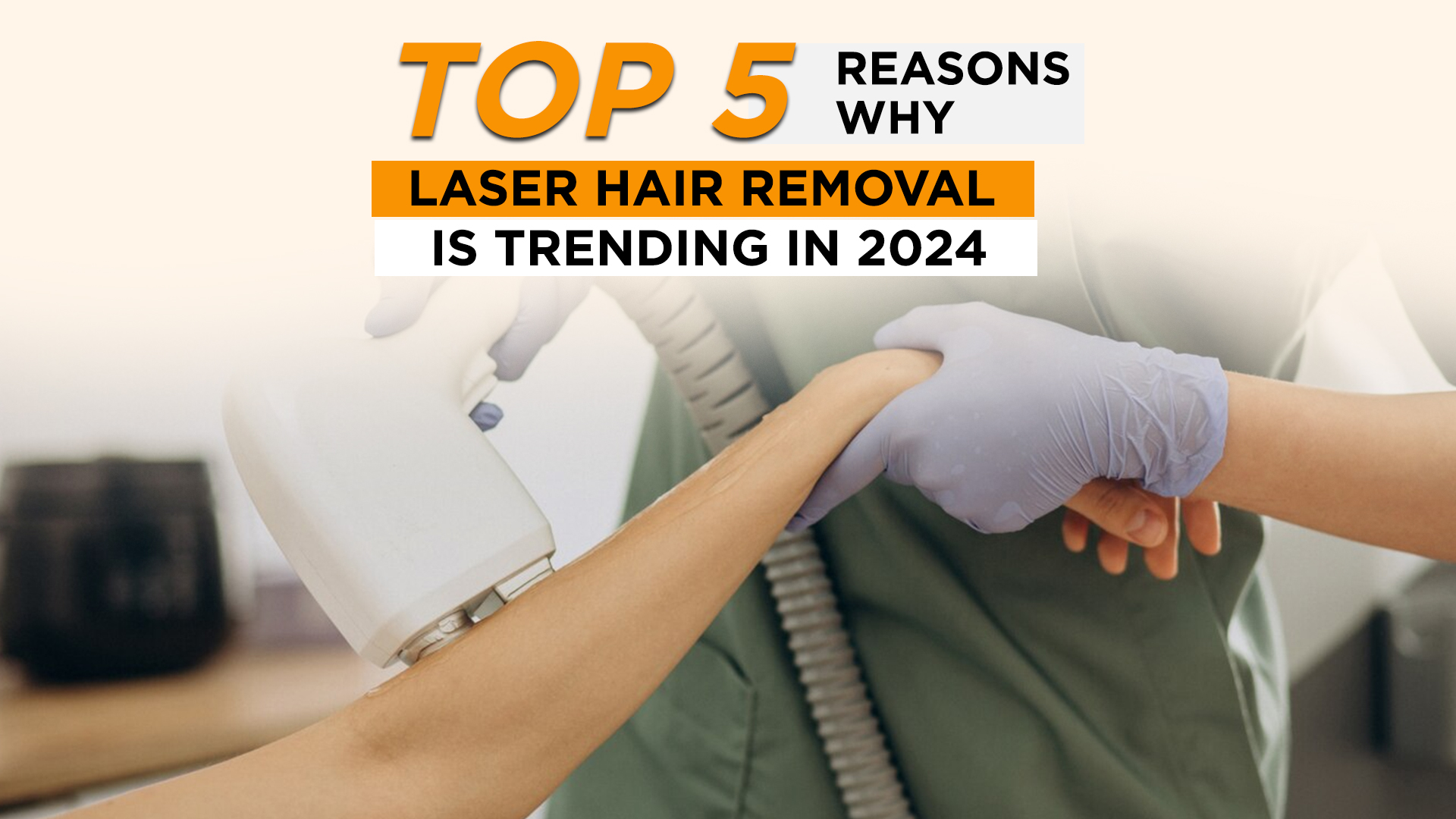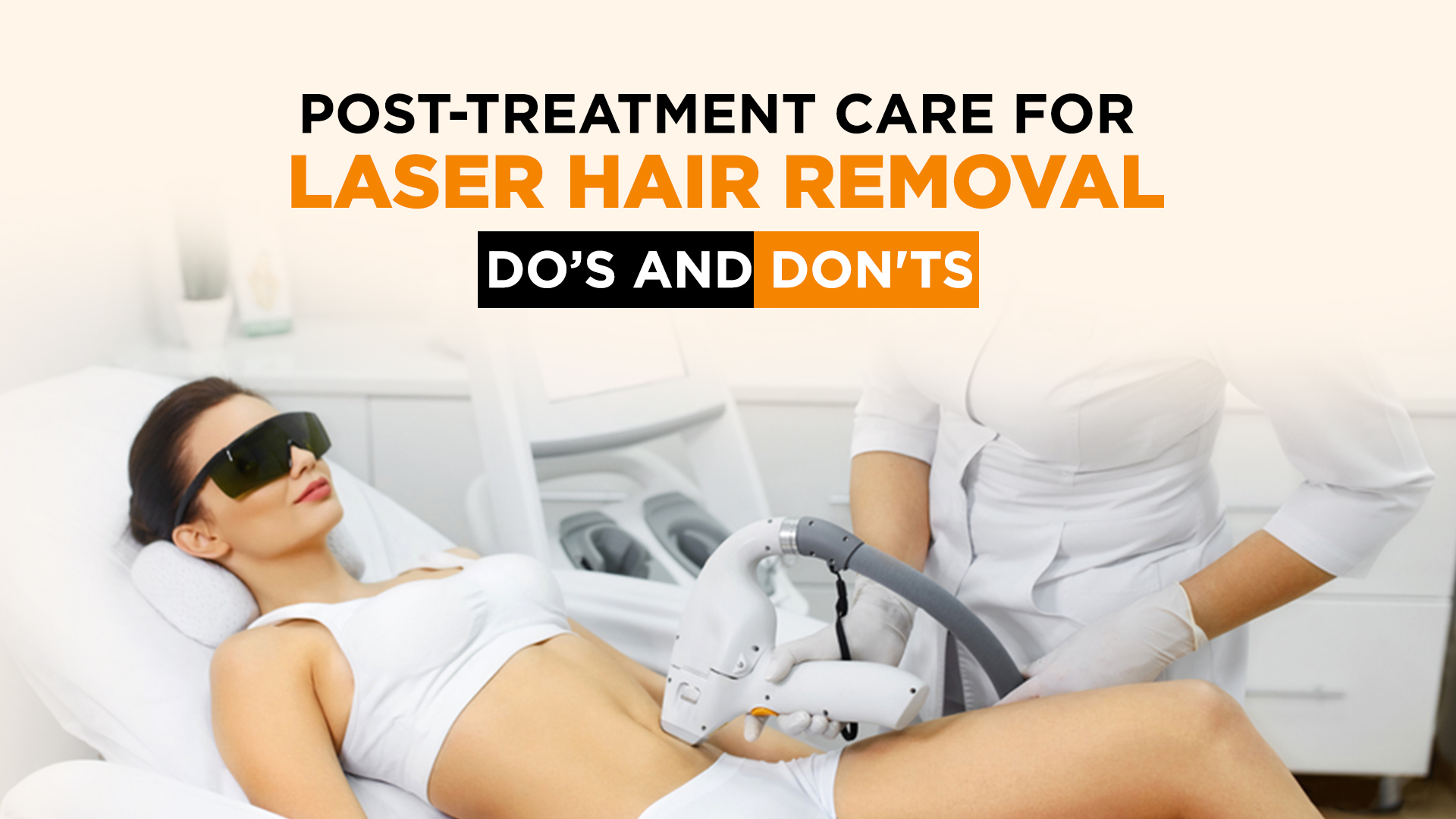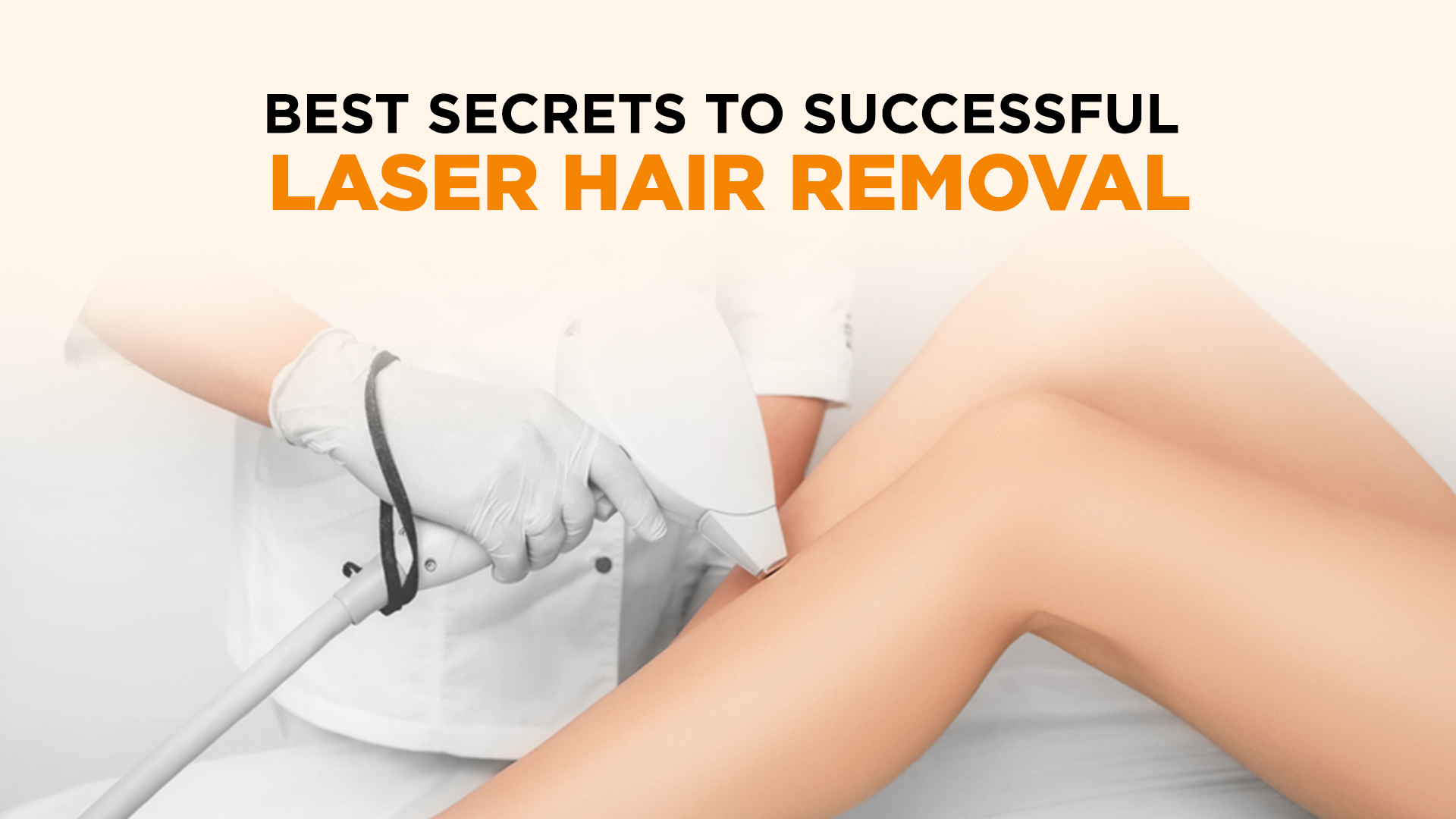Laser hair removal is a popular and effective method for reducing unwanted hair growth. This cosmetic procedure involves using a concentrated beam of light (laser) to target and damage hair follicles, inhibiting future hair growth. It’s a sought-after solution for those looking for long-term hair reduction compared to traditional methods like shaving, waxing, and plucking.
The popularity of laser hair removal stems from its ability to target specific areas, providing precision and effectiveness. It’s commonly used on the face, legs, arms, underarms, and bikini line. Additionally, laser hair removal is known for its long-lasting results, with many individuals experiencing significant hair reduction after a series of treatments.
In this blog post, we’ll explore the best secrets to successful laser hair reduction, including tips on preparation, aftercare, and maximizing results. Whether you’re considering laser hair removal for the first time or looking to improve your current experience, these secrets will help you achieve smoother, hair-free skin.
5 Best Secrets to Successful Laser Hair Removal
Here are the top 5 best secrets to successful laser hair removal you must know –
Avoid Plucking and Waxing:
Before laser hair removal, avoid plucking or waxing to preserve the hair follicles needed for treatment. These methods disrupt the hair growth cycle and can stimulate new hair growth, hindering laser effectiveness. Shaving is recommended instead, as it removes visible hair while keeping follicles intact. Laser targets hair in the active growth phase (anagen), so multiple sessions are needed to treat all follicles.
Avoid Sun Exposure
Sun exposure can make the skin more sensitive and prone to damage during treatment, leading to potential complications such as burns or hyperpigmentation. Avoiding sun exposure for at least one week before and after treatment is recommended to ensure the best results. This includes avoiding outdoor activities and using sun protection measures such as sunscreen and protective clothing. Additionally, tanning beds should be avoided, as they can also increase the risk of skin damage.
Avoid Skincare Irritants
Skincare products containing harsh ingredients such as retinoids, alpha hydroxy acids (AHAs), and benzoyl peroxide can irritate the skin and make it more sensitive to the laser. Treating your skin gently in the days leading up to your laser session helps minimize the risk of irritation and complications. Opt for mild, gentle skincare products and avoid any products that could potentially irritate your skin. This will help ensure that your skin is in the best possible condition for a successful laser hair removal treatment.
Exfoliating
Exfoliating before a laser hair reduction treatment helps to remove dead skin cells and unclog pores, creating a smoother skin surface. This smoother surface allows the laser energy to penetrate more effectively, targeting the hair follicles more precisely. However, it’s essential to use gentle exfoliation methods to avoid irritating the skin, especially in the days leading up to your laser session.
Shave the Day Before Treatment
Shaving the treatment area the day before laser hair removal session eliminates the hair above the skin’s surface while leaving the hair follicles intact. This allows the laser to target the hair follicles directly during the treatment, leading to more effective results. Shaving too close to the treatment day can cause skin irritation, so it’s best to shave the day before to allow the skin to recover before the laser session.
How to Speed up Laser Hair Removal?
Laser hair removal treatments can stimulate cellular turnover, which is beneficial for both hair removal and skin rejuvenation. The laser’s heat can trigger the skin cells to regenerate, leading to a smoother and more even skin tone. This turnover process can also help shed treated hair more quickly between appointments.
Exfoliating between laser hair removal appointments can further enhance these effects. Exfoliation helps to remove dead skin cells, allowing new, healthier skin to emerge. This can improve the overall effectiveness of laser hair removal by ensuring that the laser can target the hair follicles more precisely.
Hair Shedding After Treatment: Why It Happens?
Hair shedding after laser hair removal is a normal part of the treatment process. For a brief while after the laser targets the hair follicles, the hair may appear to be growing before shedding. This shedding is a sign that the hair follicles have been effectively treated and will not produce new hair.
Patience is key, as it may take some time for all treated hairs to shed completely. This shedding process is a result of the hair growth cycle, which consists of three phases: anagen (growth), catagen (transitional), and telogen (resting). Laser hair removal is most effective during the anagen phase, which is why multiple treatments are needed to target hairs in this phase.
Why You’re Not Seeing Results After Laser Hair Removal?
Not seeing immediate results after laser hair removal can be due to several factors affecting treatment effectiveness. Factors such as hair color, thickness, and growth cycle, as well as skin tone and type, can impact results. Additionally, incomplete or improper treatment coverage can lead to missed follicles and less effective outcomes.
Factors Making Laser Hair Removal Less Effective
These are factors that directly affect the effectiveness of laser hair removal treatment –
- Skin Tone,
- Hair Color,
- Hair Growth Cycle,
- Incomplete Treatment Coverage,
- Medications and Hormones,
- Sun Exposure,
- Improper Settings
Post-Inflammatory Hyperpigmentation: Sign, Cause, and Treatment
Post-inflammatory Hyperpigmentation (PIH) is a common occurrence after laser hair removal and appears as black dots on the skin. This happens when the laser treatment damages the hair follicle and surrounding skin, leading to an increase in melanin production.
However, PIH is a normal part of the healing process and typically resolves on its own over time. It’s important to follow post-treatment care instructions, such as avoiding sun exposure and applying soothing creams, to help the skin heal properly. If PIH persists or causes concern, consulting with a dermatologist can provide additional guidance and treatment options.
Success Rate of Laser Hair Removal:
- Initial Hair Reduction: Expect a 10% to 25% reduction in hair after the first treatment.
- Optimal Results: Up to a 90% reduction in hair can be achieved in 3-5 sessions.
- Number of Sessions: Most patients need 2 to 6 laser treatments, spaced out every six weeks, for optimal results.
- Long-Term Effects: After completing treatments, many patients experience long periods without hair regrowth, lasting several months to years.
Comparison Between Electrolysis and Laser: Which is Better?
Electrolysis is considered more permanent than laser hair removal. Electrolysis destroys the hair follicle completely, leading to permanent hair removal. In contrast, laser hair removal slows hair growth but may not permanently remove all hair.
Electrolysis typically requires more sessions (closer to 14) compared to laser hair removal, which usually requires 2 to 6 sessions. Electrolysis is more time-consuming and may be more uncomfortable, but it is effective for all skin and hair types. Laser hair removal is faster, but results can vary based on skin tone and hair color.
Conclusion:
Successful laser hair removal requires careful preparation and adherence to certain guidelines. Avoiding plucking and waxing, protecting your skin from sun exposure, and ensuring proper skincare are crucial steps. Shaving before treatment and maintaining clean, product-free skin are also important.
Additionally, understanding the hair growth cycle, being patient with hair shedding after treatment, and ensuring full treatment coverage are key factors in achieving optimal results. By following these tips and guidelines, you can maximize the effectiveness of your laser hair removal treatments and enjoy long-lasting hair reduction.




